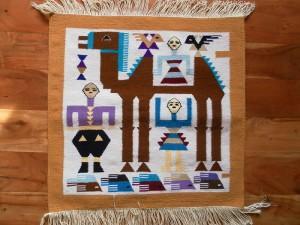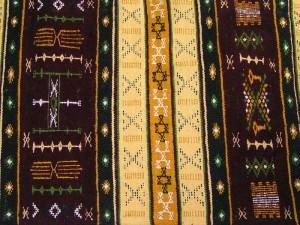
Woven carpets from Morocco are well known all over the world. Moroccan carpets, also called Berber carpets, and can be found in offices, schools and homes in the West. The intricate designs of these carpets and the vibrant range of colors used are the main reasons for its popularity. The Berber tribes crafted these carpets to suit the climatic needs in Morocco.
History
Weaving of Berber carpets is predominantly based on the female culture which was traditionally passed down from generations. The younger girls at home are trained in various looping patterns, techniques, motifs using a wide range of colors. Conventionally, professional and commercially sold carpets were produced by the men folk, while women made carpets to decorate homes. Berber carpet designs have often been an inspiration for modern carpet weaving.
Traditionally, carpets were used as gifts to give people and were used to decorate palaces and sacred spaces. Urban carpets are used as mats and prayer rugs in the Hammam. Interested people can visit the Berber Carpet Demonstration, a well known exhibition in Morocco, to know more about these carpets. Closely woven carpets can be purchased from the tribes of Souks, Marrakech, Haouz, Rabat and Fes.
Carpets from Haouz
Berber carpets that originate from the plains and hills of Haouz region in Morocco are called the Haouz carpets. These carpets do not have distinctive patterns, designs or rules of weaving. Weavers express their artistic freedom by way of these designs that can be seen throughout the carpets. The designs are unique and are fascinating pieces of art.

Climate and its effect on the Berber carpet
The weaves of the Berber carpets were designed in such a way so as to adapt to various climatic conditions. The tribal people in the mountainous region weaved the rugs with wider loops leaving a lot of space between the knots. This style provides insulation and protection from the cold. The weaves of the carpet are much finer in warmer regions. These carpets were utilized as sleeping mats in the Middle Altas and knots were 2 cm thick in mild climatic regions.
Styles of Berber carpet
Conventional Berber carpets are woven using camel hair and sheep wool. Nowadays, they are also made using Olefin material and nylon. These carpets have typically Moroccan colors and patterns. The wool used is naturally dyed using extracts like wild mint green, henna, pomegranate and saffron yellow. All of these materials are hand washed. The geometric designs on the carpets are distinguishing factors of the Berber carpet that date back to the Merinid Era. The diamond shaped designs are indicators of carpets from the Middle Altas region.

